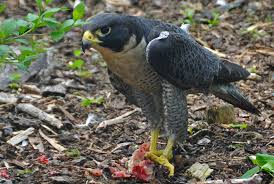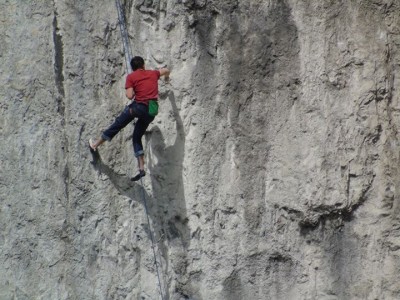Malham Cove & Tarn
picture credit Rachele Gaden (IFY Community)
High on a hillside, in the Southern part of the Yorkshire Dales lies Malham Cove and tarn. These beautiful natural features have been part of the Yorkshire landscape long before man ever set foot in God’s own county.
Natural History
Malham Cove was formed at the end of the last ice age. During this period the whole of the area was covered permanently in ice. When temperatures warmed this melted into running water, creating a large river and waterfall, which flowed over the cove. Eventually this dried up, leaving the bare eroded river bed in the form of limestone rock. Over time this exposed rock face has eroded due to acid rain, forming the pavement we see today on top of the cove.
This erosion has created chunks of rock, known as slabs or “clints,” and deep cracks between them known as “grykes.” This feature of the cove is very rare in the UK, which makes Malham a magnet for both geologists and tourists alike.
Two and a half miles away is Malham Tarn. It is one of only eight alkaline lakes in Europe and is the highest in the UK, lying at 1,237 feet above sea level. The stream which flows out of the lake is the last remaining remnant of the river which once flowed over the limestone pavement of Malham Cove. Nowadays it flows underground, before emerging downstream as the source of the River Aire. It has been proven by scientists that this stream is not the same water source as Malham Beck, which flows out the foot of the cove and the two are indeed a few kilometres apart.
Human History
The area has a long human history. The shores of Malham tarn was used as a camp for hunting local deer, as far back as the Mesolithic Times (around 5-10,000 years BC) and the hills around both the tarn and cove were used by early farmers to graze sheep. Some of the early field systems developed during the Bronze Age are still evident today. Uncovered beneath the fields was a Roman marching camp.
During Medieval Times, the lands around both the cove and tarn were divided up amongst local abbeys and monasteries, such as Fountains Abbey and used primarily for grazing sheep. Malham Moor fell into private hands after the dissolution of the monasteries in the mid 16th Century.
The lands around the tarn changed hands several times, before they were taken on eventually by Thomas Lister, who built a hunting lodge at the side of the lake in the 1780s, on the previous site of a farm.
During the Victorian era the manor house was sold to the Morrison family, who kept it in their possession until 1946 when the Malham estate was given to the National Trust. The lands are still used for sheep-grazing by local farmers, as is very evident to anybody who has ever walked from the village to the cove! The original manor house is now a Field studies centre, used by both scientists and students alike.
The cove and tarn are nowadays a very popular tourist attraction, admired by people all over the world for their natural beauty and rare geographical features.

Things to see and do
Discover Malham Village and Visitor Centre

There is extensive car-parking in the village both near the Visitors Centre and at an overflow site in a nearby field. The National Park Visitor Centre has a gift shop, tourist information and an exhibition displaying the history of the area. The village has an array of pub and cafe’s if you fancy a bite to eat. Townhead Barn is a small exhibition which opened in 1997. It shows visitors the inside of a traditional Yorkshire barn and tells the story of farming practices in the Dales. The village is very picturesque, with Malham Beck at its centre and is worth a walk round to see a fine example of life in rural Yorkshire.
Explore The Cove

A path, which is part of “The Pennine Way” leads from the village to the cove. Mind the sheep muck! The path is beautiful and runs alongside the babbling Malham Beck. Walkers can either follow the footpath down to the base of the cove or fork to the left, which takes you up the two hundred steps to the top of the cove and limestone pavement. There are places to sit on the way if climbing all the steps is a little too arduous all in one go!
Admire The Limestone Pavement

It’s time to get the camera out, or just lie back and take in the stunning views. The top of the cove, which is 260ft high, is covered with the limestone pavement. Be careful as you scramble from rock to rock and don’t go too near the edge, it’s a long way down! Having said that, find a ledge, sit down and just admire the view of Malhamdale, including the village, beck and surrounding countryside. Look for plants growing in between the rocks, as some of these are rare, including hart’s tongue fern and wood sorrel.
Explore Nature

The cove is famous for its Peregrine Falcon population, which have nested in there since 1993. The National Park Authority, together with the RSPB has opened a viewing platform, where you can observe these magnificent birds of prey. It is open from Saturday to Wednesday from 10.30am-4.30pm. More information can be found here. Other birds found near the cove include Grey Wagtails, Spotted Flycatchers, Tawny Owls and Green Woodpeckers.
Malham Tarn Nature Reserve is also noted for its diverse birdlife including Teal, Coot and Great Crested Grebe on the water and wading birds, such as Curlew, Oystercatcher and Snipe around it. The tarn also harbours six species of fish and white clawed crayfish.
Participate in Outdoor Pursuits

The nature of the cove and countryside around it lends itself very well to a range of outdoor activities. It is a common sight to see people abseiling from the top of the cove or rock climbing from the bottom. The landmark sits on the Pennine Way and so there are plenty of designated footpaths which are well signed. The complexity of the cove’s geographical structure also lends itself to caving expeditions. It goes without saying, only attempt these activities if you are fully trained and know exactly what you are doing.
Opening Times
Essentially both the cove and tarn are open twenty-four hours a day, three hundred and sixty five days a year, as they are both natural landmarks. The visitor centre is open 9.30am-17.00 from April-October and at selected times during the winter months. Toilet and picnic facilities are available during opening hours.

